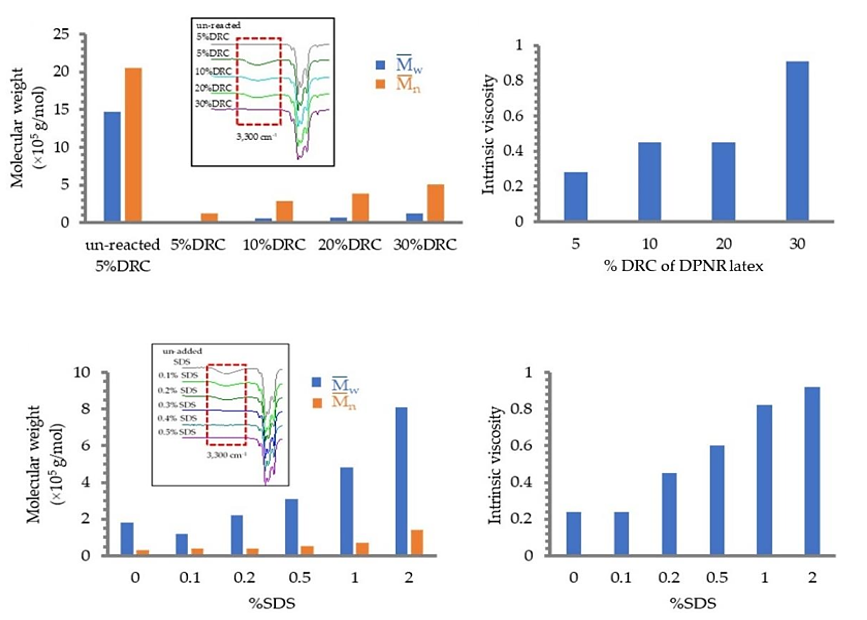Hydroxyl-terminated natural rubber (HTNR) is a product of interest for making natural
rubber (NR) easy and versatile for use in a wide range of applications. Photochemical degradation using a TiO2 film that has been deposited on a glass substrate is one of the fascinating methods of producing HTNR. Nevertheless, light energy is wasted during the photodegradation process because a glass substrate has a cutoff for ultraviolet light. To enhance the effectiveness of the process, a quartz substrate was coated with the TiO2 film for photochemical breakdown. X-ray diffraction (XRD) spectroscopy and atomic force microscopy (AFM) were applied to investigate the TiO2 deposited on glass and quartz substrates. In addition, the influence of several factors, such as rubber and surfactant concentrations, on the reaction was investigated. After the reaction, the properties of the rubber products, including intrinsic viscosity, molecular weight, and microstructure, were determined. A unique diffraction peak for the anatase (101) phase could be observed in the TiO2 film deposited on the quartz substrate, resulting in photochemical activity and photocatalytic efficiency significantly
higher than those of the substrate made of glass. In the scenario of deproteinized NR (DPNR) latex containing 10% DRC, 20% w/w H2O2, and TiO2 film coated on a quartz substrate, the HTNR could be manufactured effectively.

Reference:
Sillapasuwan, A., Saekhow, P., Rojruthai, P., Sakdapipanich, J. The Preparation of Hydroxyl-Terminated Deproteinized Natural Rubber Latex by Photochemical Reaction Utilizing Nanometric TiO2 Depositing on Quartz Substrate as a Photocatalyst, Polymers 2022, 14(14), 2877.et, consectetur adipiscing elit. Ut elit tellus, luctus nec ullamcorper mattis, pulvinar dapibus leo.
